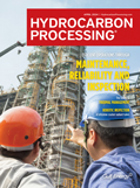Safety
Cybersecurity visibility and resilience: Keys to protecting HSE/margins in operations
As digitalization accelerates in today’s downstream refining and petrochemical facilities, operators need to stay ahead of ever-growing cyber vulnerabilities in the operational technology (OT) layer—prime targets for threat actors—that may not be covered by traditional IT safeguards. Unfortunately, too often, that is not the case for a variety of reasons.
Case study: Heat exchanger tube rupture and its impact on metal embrittlement
Process engineers strive to recover as much energy as is practically possible from the available process and utility streams within the constraint of the plant. To achieve this goal, traditional—and sometimes non-traditional—methods are utilized. In a steam cracker, light olefins are considered the highest-value products, and utilizing “cold energy,”
Reliability: Things rarely heard at reliability conferences
We can only guess how many reliability conferences we have attended since accepting job offers in the refining or chemical processing industries. In my case, starting in 1965, it is somewhere between 60 and 80. If, in each of these conferences I listened to six presentations, the number of sessions attended is perhaps 400.
Business Trends: EPC 2030: Five vital characteristics that will define the EPC firm of tomorrow
The state of the global engineering, procurement and construction (EPC) industry can accurately be described as “challenging.” Operating in an environment of volatile, uncertain, complex and ambiguous conditions, EPC firms are facing unsustainable levels of stress.
Digital: Better maintenance through better data
When I talk to professionals in the refining and petrochemical businesses, they are always interested in how new technologies can improve operational efficiency, make plants safer and increase profitability.
IMO 2020 stability and compatibility headaches
The year 2020 will be a mess from the fuel oil stability and compatibility points of view. The year will be price-driven, so the temptation to “cut corners” is great—meaning that a highly variable number of blend components to manufacture the fuel oil will open a “Pandora’s box” of complex and questionable fuel formulations.
How changes to functional safety standards can optimize fire and gas detection
ANSI/ISA-84 is one of the most influential standards in functional safety and has been a driver for instrumented process safety improvements over the last 20 yr. It is a comprehensive norm covering a wide range of aspects related to functional safety in process industries, including the entire life cycle of designing, implementing and operating safety systems.
Rethink fired heater design for emissions
As environmental regulations are becoming more stringent on reduced nitrogen oxide and carbon monoxide emissions, burner designs are changing to meet revised regulations. The heater design must complement the chosen burner for optimal performance. Although design duty is considered to be the main focus of the heater design, the range of heater operation and its impact on heater safety and emissions needs are often neglected.
Process Safety: Process safety in a connected world
Traditionally, conversations around automation and safety have focused largely on logic solvers and instrumentation. However, new disruptive technologies and a rapid expansion in networking and computing resources have broadened the scope of automation’s reach. These transformative technologies and approaches promise to reduce incidents and increase production in ways industry could only imagine in the past; but while the “pieces” are available, organizational silos and entrenched cultures stand in the way.
Inspection: Best practices for inspecting guyed structures
Guyed structures are common in petrochemicals, oil and gas and chemical industries. Half of the installed flare structures at many facilities are guyed. Various routine inspection programs are in place to examine these structures. This work describes some very basic checks, which should be in place to maintain their mechanical integrity.

- HIF Global selects Johnson Matthey’s methanol technology for the largest e-methanol plant in South America 5/16
- BASF expands its biomass balance portfolio for selected chemical intermediates 5/16
- INEOS Inovyn launches next-generation recycling pilot plants to strengthen Europe’s PVC recycling 5/16
- How Europe reduced its greenhouse gas emissions in 2023 5/16
- Plug signs contract with Allied Green Ammonia to supply H2 for planned ammonia facility in Australia 5/16
- HSBC to arrange funds for $1.49-B expansion project at Vietnam's Binh Son refinery 5/16




